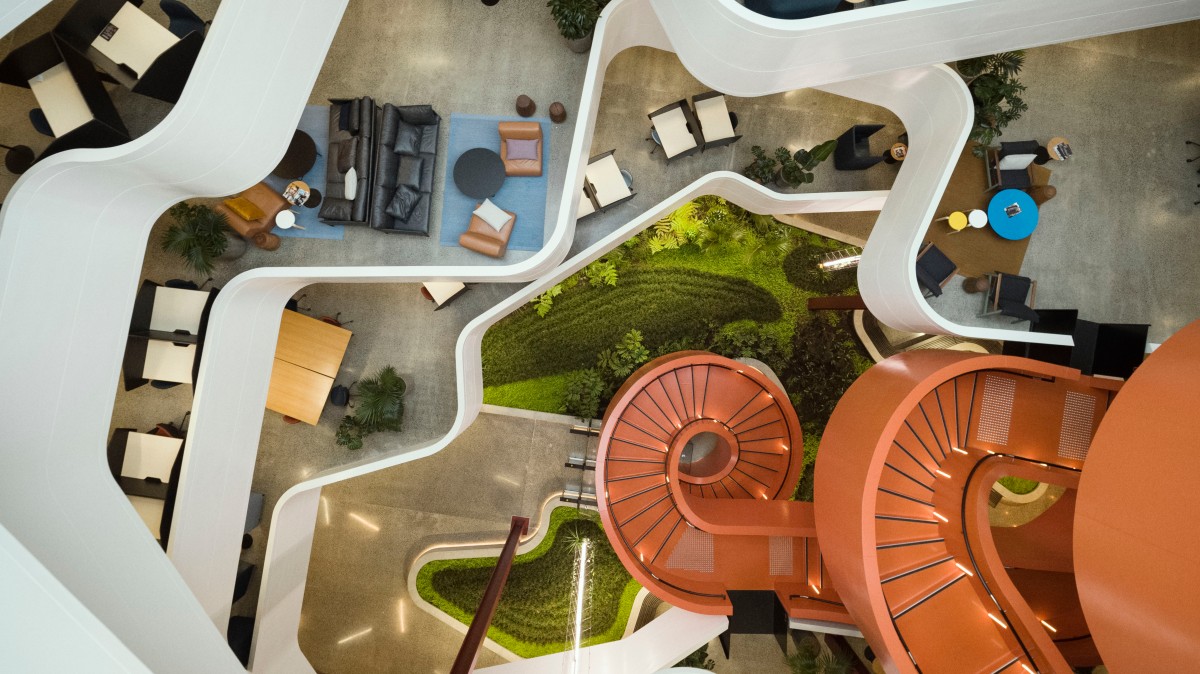By Laurie Aznavoorian

We are all a little less worried about sitting these days, remember a few years ago when sitting got touted as the new smoking?
Now the new smoking is breathing outdoors if you live in Sydney. Analysis of the city’s level of smoke-related particulate solution known as PM2.5 performed at UTS was found it to be the equivalent of smoking up to 32 cigarettes. Air quality here is ten times worse than some of the most polluted cities in the world! Isn’t that special.
So, you can take the weight off your shoulders you’ve been carrying about sitting on your arse all day and while you’re at it, take the weight you’ve been carrying about your weight too because they are the least of our worries. Climate change is without a doubt up there, it’s indeed a conundrum, but not one to talk about now. Today’s focus is a new malady that’s proving to be more lethal than either obesity or smoking. What’s the new concern, the one public health experts have deemed an epidemic? Loneliness.
More than one-fifth of Americans and British people say they are chronically lonely and in Australia we fare no better, according to the Australian Psychological Society’s Australian loneliness report one in four Australians feel lonely.
. The bad news is that loneliness does not just impact us psychologically, it’s also linked to physical health. Researchers at UCLA have learned that social isolation triggers stress hormones leading to cellular changes that cause inflammation, which leads to heart disease, stroke, metastatic cancer and Alzheimer’s disease. As if that is not enough, when were lonely we become sooks and forget about exercising, eating right or going to the doctor. Consequently, lonely people have a 26% higher risk of dying.
The UK is so concerned about this that they’ve appointed a minister of loneliness and put in place programs to confront the ‘loneliness epidemic’. Australia, Canada, Germany and New Zealand are considering similar moves. But detecting and dealing with loneliness is no small task, we know humans are social beings, but just because someone is alone does not make them lonely. Similarly, we can be surrounded by people and have a robust number of social media friends, but still feel our social relations are lacking.

The rise in people who report being lonely tracks with other societal shifts that have occurred such as younger people increasingly moving away from home and their established social networks, delaying marriage, skipping kids and working all the time. But older people not as impacted by those shifts are also lonely. Nearly half of Britons over 65 say television and pets are their main form of company. And the poor Japanese have the hikikomori, they are hip under 40s who don’t leave their house for six months.
Entrepreneurs can smell opportunity in the air and have developed products and services that they hope will put an end to isolation. One is Tribe, a co-living space in Brooklyn whose motto is “we help you make friends”, and of course there is WeWork who claim to be “building a new infrastructure to rebuild social fabric and rebuild up the potential for human connection.” (for their former CEO Adam Neumann that means getting stoned on a private jet). Microsoft’s new London store is designed less as store and more as community hub and meeting place. And then there are services like Hey Vina, Bumble BFF and Peanut expressly designed to help humans bond with other humans.

The healthcare market has responded to epidemic by practicing ‘social prescribing’ a new way to help patients that involves placing social workers and non-medical support people in doctor’s offices to link patients to a wide range of social, emotional or practical services to address: housing problems, financial stress, loneliness and social exclusion.
While we haven’t labelled it as such and our motivations may be different, architects and designers have been tackling the problem of loneliness for some time. We search for the “genius loci”, a spirit of place or distinctive atmosphere that draws people to place and one another. Even the typology of typical commercial office buildings has also evolved to foster connection, now footprints, core locations and the introduction of stairs and atriums all contribute to the building as a platform for community building. More buildings today feature outdoor areas, fresh air and daylight that provide much needed areas of refuge for sound mental health.
Similarly, workplace designers use spaces as attractors to encourage serendipitous interaction and exchange of information. They also encourage movement with clever planning devices. And in recent years much attention has been placed on the interplay between the digital and physical environments to heighten, real time predictive user experiences. Workplace apps connect people in space and enable them to establish professional and social networks.
Our vocation is to make spaces for people, it’s imperative we think about how the environments we create help us tackle social issues like loneliness. It’s not a simple problem but one we hope to learn more about. .
I am excited to finally be able to tell you about the launch of a research project we are doing that will address the impact of spatial design on human’s ability to establish workplace networks, build community and feel a sense of belonging.
The work is being conducted by B:Hive – a workplace community BVN designed in Auckland New Zealand), BVN Architecture, The University of New South Wales and the Worktech Academy who are the fastest growing global online knowledge platform and member network exploring the future of work and workplace.
After many reviews and false starts we have launched a survey to B:Hive users this morning and will follow up with interviews and observations. Our findings will be published on the Worktech Academy website and used in other academic and design related publication. Watch this space!
Sources:
Butler, Sarah; Microsoft to Open First European Store in Central London; The Guardian; July 11, 2019
Entis, Laura; The Big Business of Loneliness – Coworking spaces, friendship apps, and adult dorms are selling human connection;
Howe, Neil; Milennials And The Loneliness Epidemic; Forbes, May 3, 2019
Liotta Morgan; Fostering Connections to Overcome Loneliness; New GP; April 2019
Ozcelik, Hakan and Barsade, Sigal; Work Loneliness and Employee Performance; published on line doi.org November 30, 2017
Philpot, Catherine; The Silent Epidemic; The Salvation Army; April 30, 2019
Social Prescribing – A New Way to Think About Healthcare; blog chf.org.au; September 6, 2019
